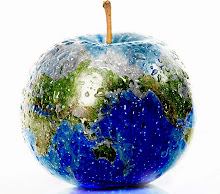Thursday, 31 January and Friday, 1 February, 2008








These are the home learning 4 handouts. Be sure to read carefully to determine which questions to answer. Answers only. Head your loose leaf paper correctly!


These are the instructions for the 3rd Grading Period Project: The Rock Collection. Be sure to follow all directions. Page 1 is the cover, Page 2 is the problem/hypothesis, Page 3 is the research, Page 4 is the materials, Page 5 is the procedures (I will give you this page), Page 6 is the data and observations, Page 7 is the conclusions and analysis, Page 8 is the references.
Using information from internet movies, textbooks and classroom discussions,
Students should be able to:
-take a quiz on weathering and erosion.
-if necessary, hypothesize and test to determine how chemical and mechanical weathering affects marble rocks.
-identify the properties used to identify minerals.
The do now was a read/think/explain. Minerals are often called the Earth's jewels. Do you agree? Write to explain your position.
After home learning was collected and reviewed, students received HL #4. This can be found at the top of this blog. Read each page carefully to determine what should be done. The directions are on the top of each page. All answers should be recorded on only one sheet of loose leaf paper. You may write on the back of the paper. Be sure to put the heading for each section before you record your answers. For example, write the heading What are rocks? before answering 1-6 on the first page. Be sure to answer the pages in the order written on the top of the sheets.
In addition, students received the instructions for project 3, The Rock Collection. Be sure to note all deadlines and required elements. These pages can also be found at the top of this blog.
Students needing to finish the hands-on activity did so by placing marble rocks in acid and shaking similar rocks to determine which caused the greatest weathering.
Finally, students read section one of chapter 8 on Minerals. They made two column notes to record the properites used to identify minerals. Try clicking the following link to access the text: www.mhln.com/CorsairBook?ACTION=0&FILE=218.html&ISBN=0078693896&S=0&F=1 Simply scroll forward to read the entire section.
Once again, HL #4 and Project 3 can be found at the top of the blog.






















